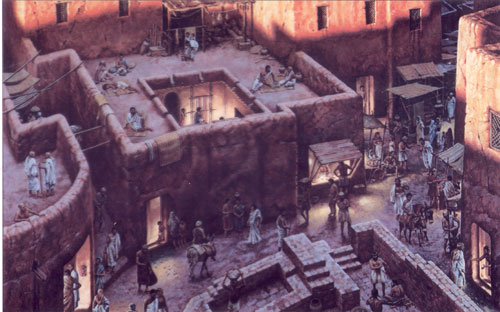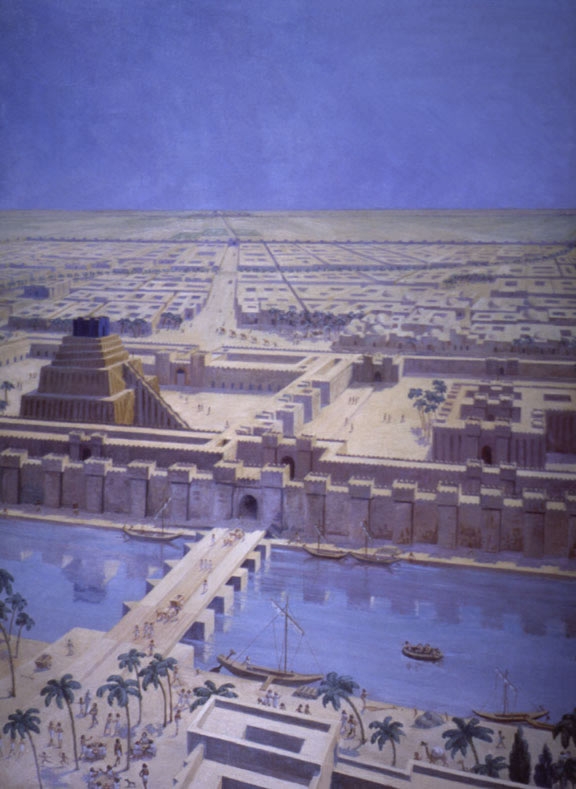- Joined
- Jan 26, 2010
- Location
- Why do you care?
THE HUB WORLD (concept created and written by Mr Master)
INITIAL PREMISES
Okay, so, when I was thinking of some kind of environment that would be equally accessible to any sort of RP world you want to envision, I had the concept that these worlds are literally different worlds. That's how you justify demons, sci-fi, magical realms, vampires, furries, what have you; they each come from a dimension or world where those things happen.
So, to crossover maximally, you need to have a space that's connected in some way to all these worlds. That automatically means you can't have the requirement for magic or technology to manage the transition, because not every RP world has magic, nor high technology.
There's a variety of crossing-world techniques in literature, but it's not just going from place to place that was intriguing, as much as the idea of a neutral ground, a no-man's land, which would allow the denizens of different worlds to meet and interact, without having to commit to them being on someone's home territory. This is also why I didn't want it to be a specific world, per se, but a limited territory would be all that would be necessary: a kind of inter-dimensional Casablanca, a Free City of Denver (to you Shadowrun players out there), etc., and so forth.
Now, in "The Magician's Nephew," C. S. Lewis wrote of a kind of grove outside of time and worlds, where you could enter other worlds by going into other "pools" of what appeared to be water but didn't get you wet. This was fine, but I didn't think something pastoral would be what we wanted. I mean, most of the RPs deal with drama, sometimes corruption, certainly action of various sorts. That seems more like it would be urban, like cities tend to breed greater moral darkness and a wider variety of dysfunction and criminality/activity. So then I wanted there to be something like a city, although you'd want to have some sort of nod to the wilderness, too.
So far, we have a limited no-being's-land that has the form of an urban environment. But what sort of city? The idea of varying time periods, varying technologies, meant it had to have some kind of timeless quality. Something that could be relatable to just about any character, and just about any technology frame. I wanted something that readers and characters alike could instantly recognize, and yet would be timeless. Best I could come up with was something like the ancient Babylonian cities, which seemed both a touch exotic and a bit primitive, but also very adaptable to general RP purposes.
There would have to be details, but the imagery was already coming together. The whole concept of the place was a point of transition between worlds and dimensions, and it's about passages, doorways, alleys, arches, tunnels, ways from one place to another. The thematic unity of the place was important, as well: it should be perpetually twilight there, as that's the point between day and night and day again, it's neither one but rather a transition between the two. Overcast and foggy, but never rainy, both because it's easier to explain the sourceless twilight that way and obscure distance details, but also because it's another transitional feature.
Then I had to think of how you got here. Again, there's a variety of ways. Kids got to Narnia in a variety of ways, His Dark Materials, the two Pandora's Star books, etc. I wanted to have the opportunity to introduce as wide a variety of RP environments as possible, which meant I wanted to discourage requiring specific methods. I wanted it so literally anyone could stumble into the place.
Which brought up the Pandora's Star books. One of the major plot threads involves characters skipping between worlds simply by hiking, and eventually they find themselves elsewhere. There's somewhat more to it, but that's essentially the observable transition. I liked that, because it was a) easy to describe, yet still mysterious, b) universally applicable without special preparation or tools, c) as metaphoric and thematic as anything else. It could be done accidentally, and yet one could learn the knack and do it at will, and bring people with you. It seemed like it was the best candidate idea I'd run across yet.
So that's the initial concepts. Everything else was working on the mysteriousness, universal application, and interesting hooks.
This is a draft of what came out of those thoughts. This is only a draft, presented here for review so you can see what came out of those premises in my head. I want to encourage reaction and discussion in this thread, as this is a starting point for some of these concepts. What initial premise should stay, what should be changed, what other ideas or ways to solve particular problems can be enabled? This is a high-level environment mechanics issue, and simpler is better, as is wider application. I think I've come up with some simple and widely-applicable answers to most of the issues I've thought of, but I'm happy to consider other issues and other answers; I'm not perfect, but I like to think I can world-build a little bit after all these years practicing.
INITIAL PREMISES
Okay, so, when I was thinking of some kind of environment that would be equally accessible to any sort of RP world you want to envision, I had the concept that these worlds are literally different worlds. That's how you justify demons, sci-fi, magical realms, vampires, furries, what have you; they each come from a dimension or world where those things happen.
So, to crossover maximally, you need to have a space that's connected in some way to all these worlds. That automatically means you can't have the requirement for magic or technology to manage the transition, because not every RP world has magic, nor high technology.
There's a variety of crossing-world techniques in literature, but it's not just going from place to place that was intriguing, as much as the idea of a neutral ground, a no-man's land, which would allow the denizens of different worlds to meet and interact, without having to commit to them being on someone's home territory. This is also why I didn't want it to be a specific world, per se, but a limited territory would be all that would be necessary: a kind of inter-dimensional Casablanca, a Free City of Denver (to you Shadowrun players out there), etc., and so forth.
Now, in "The Magician's Nephew," C. S. Lewis wrote of a kind of grove outside of time and worlds, where you could enter other worlds by going into other "pools" of what appeared to be water but didn't get you wet. This was fine, but I didn't think something pastoral would be what we wanted. I mean, most of the RPs deal with drama, sometimes corruption, certainly action of various sorts. That seems more like it would be urban, like cities tend to breed greater moral darkness and a wider variety of dysfunction and criminality/activity. So then I wanted there to be something like a city, although you'd want to have some sort of nod to the wilderness, too.
So far, we have a limited no-being's-land that has the form of an urban environment. But what sort of city? The idea of varying time periods, varying technologies, meant it had to have some kind of timeless quality. Something that could be relatable to just about any character, and just about any technology frame. I wanted something that readers and characters alike could instantly recognize, and yet would be timeless. Best I could come up with was something like the ancient Babylonian cities, which seemed both a touch exotic and a bit primitive, but also very adaptable to general RP purposes.
There would have to be details, but the imagery was already coming together. The whole concept of the place was a point of transition between worlds and dimensions, and it's about passages, doorways, alleys, arches, tunnels, ways from one place to another. The thematic unity of the place was important, as well: it should be perpetually twilight there, as that's the point between day and night and day again, it's neither one but rather a transition between the two. Overcast and foggy, but never rainy, both because it's easier to explain the sourceless twilight that way and obscure distance details, but also because it's another transitional feature.
Then I had to think of how you got here. Again, there's a variety of ways. Kids got to Narnia in a variety of ways, His Dark Materials, the two Pandora's Star books, etc. I wanted to have the opportunity to introduce as wide a variety of RP environments as possible, which meant I wanted to discourage requiring specific methods. I wanted it so literally anyone could stumble into the place.
Which brought up the Pandora's Star books. One of the major plot threads involves characters skipping between worlds simply by hiking, and eventually they find themselves elsewhere. There's somewhat more to it, but that's essentially the observable transition. I liked that, because it was a) easy to describe, yet still mysterious, b) universally applicable without special preparation or tools, c) as metaphoric and thematic as anything else. It could be done accidentally, and yet one could learn the knack and do it at will, and bring people with you. It seemed like it was the best candidate idea I'd run across yet.
So that's the initial concepts. Everything else was working on the mysteriousness, universal application, and interesting hooks.
This is a draft of what came out of those thoughts. This is only a draft, presented here for review so you can see what came out of those premises in my head. I want to encourage reaction and discussion in this thread, as this is a starting point for some of these concepts. What initial premise should stay, what should be changed, what other ideas or ways to solve particular problems can be enabled? This is a high-level environment mechanics issue, and simpler is better, as is wider application. I think I've come up with some simple and widely-applicable answers to most of the issues I've thought of, but I'm happy to consider other issues and other answers; I'm not perfect, but I like to think I can world-build a little bit after all these years practicing.
Last edited by a moderator:

 Your support makes Blue Moon possible (Patreon)
Your support makes Blue Moon possible (Patreon)




